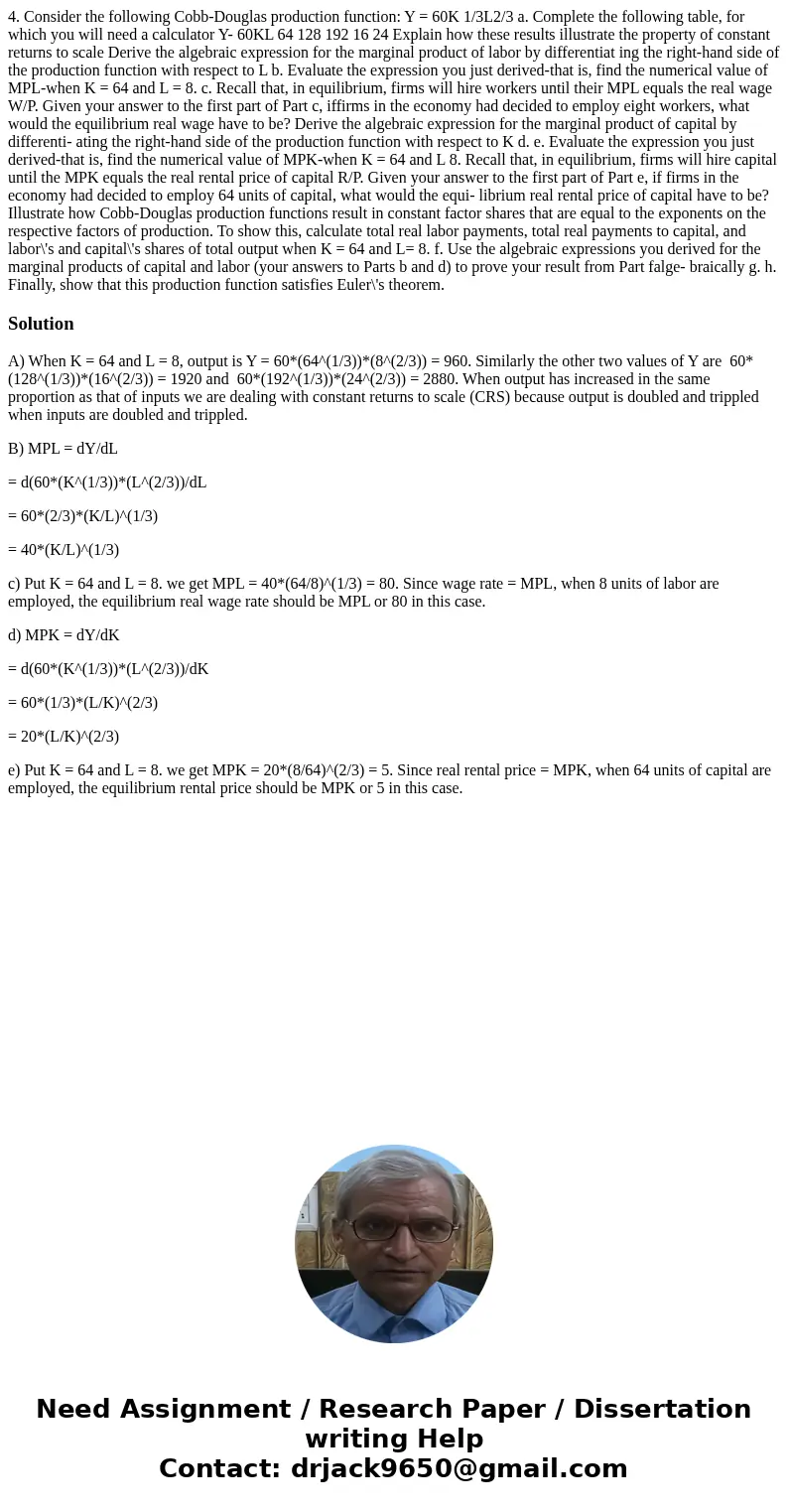4. Consider the following Cobb-Douglas production function: Y = 60K 1/3L2/3 a. Complete the following table, for which you will need a calculator Y- 60KL 64 128 192 16 24 Explain how these results illustrate the property of constant returns to scale Derive the algebraic expression for the marginal product of labor by differentiat ing the right-hand side of the production function with respect to L b. Evaluate the expression you just derived-that is, find the numerical value of MPL-when K = 64 and L = 8. c. Recall that, in equilibrium, firms will hire workers until their MPL equals the real wage W/P. Given your answer to the first part of Part c, iffirms in the economy had decided to employ eight workers, what would the equilibrium real wage have to be? Derive the algebraic expression for the marginal product of capital by differenti- ating the right-hand side of the production function with respect to K d. e. Evaluate the expression you just derived-that is, find the numerical value of MPK-when K = 64 and L 8. Recall that, in equilibrium, firms will hire capital until the MPK equals the real rental price of capital R/P. Given your answer to the first part of Part e, if firms in the economy had decided to employ 64 units of capital, what would the equi- librium real rental price of capital have to be? Illustrate how Cobb-Douglas production functions result in constant factor shares that are equal to the exponents on the respective factors of production. To show this, calculate total real labor payments, total real payments to capital, and labor\'s and capital\'s shares of total output when K = 64 and L= 8. f. Use the algebraic expressions you derived for the marginal products of capital and labor (your answers to Parts b and d) to prove your result from Part falge- braically g. h. Finally, show that this production function satisfies Euler\'s theorem.
A) When K = 64 and L = 8, output is Y = 60*(64^(1/3))*(8^(2/3)) = 960. Similarly the other two values of Y are 60*(128^(1/3))*(16^(2/3)) = 1920 and 60*(192^(1/3))*(24^(2/3)) = 2880. When output has increased in the same proportion as that of inputs we are dealing with constant returns to scale (CRS) because output is doubled and trippled when inputs are doubled and trippled.
B) MPL = dY/dL
= d(60*(K^(1/3))*(L^(2/3))/dL
= 60*(2/3)*(K/L)^(1/3)
= 40*(K/L)^(1/3)
c) Put K = 64 and L = 8. we get MPL = 40*(64/8)^(1/3) = 80. Since wage rate = MPL, when 8 units of labor are employed, the equilibrium real wage rate should be MPL or 80 in this case.
d) MPK = dY/dK
= d(60*(K^(1/3))*(L^(2/3))/dK
= 60*(1/3)*(L/K)^(2/3)
= 20*(L/K)^(2/3)
e) Put K = 64 and L = 8. we get MPK = 20*(8/64)^(2/3) = 5. Since real rental price = MPK, when 64 units of capital are employed, the equilibrium rental price should be MPK or 5 in this case.

 Homework Sourse
Homework Sourse